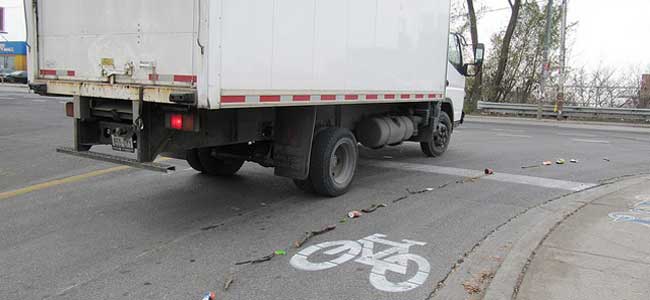A recent experiment conducted by Brooklyn Spoke blog author Doug Gordon has confirmed what many people already suspected; simply having a barrier between the road and bike lane can have a dramatic impact on driver behavior. Inspired by the DIY guerrilla bike lane comprised of orange construction cones, Gordon decided to use red Solo cups to more aggressively distinguish between vehicle traffic and the adjacent bike lane. In doing so, he noted that traffic seemed to be more respectful of the bike lane, despite the fact that the red Solo cups would have no real impact on a vehicle if they were to veer over into the bike lane.
Last year, a similar experiment was conducted in Toronto. Following the death of a pregnant woman who was killed by the back wheels of a truck while riding her bike, a pair of cycling activists created a homemade bike lane using sticks and garbage. The result: “Drivers seemed to stay clear of our faux bike lane when they drove through the intersection, including a large tractor-trailer whose rear wheels stayed clear of our bike lane.”

The unscientific—but still helpful—report concluded, “Having a bike lane might prevent this type of collision from occurring by giving a cyclist more space and making a truck driver more aware that a cyclist might be present.” The mere presence of an additional partition serves as a reminder to vehicles that they’re sharing the road with cyclists. Additionally, these minor raised partitions prove considerably more effective than just painting a stripe and expecting drivers to stay on their side.
Separated bike lanes are gaining more and more traction from city planners and bike advocates alike. A recent conference in Vancouver BC discussed the merits of building a network of “segregated bike lanes that actually get people where they want to go.” In Sydney, the city was able to increase cycling rates by 82 percent in just two years by incorporating separated lanes.
If you want to get more people on bikes, they need to feel safe. As these crude but effective experiments confirm, separated bike lanes work. Now we just need to start implementing what we already know.

